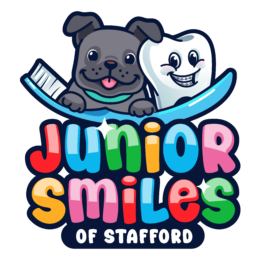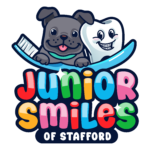Oral Thrush in Toddlers: Signs, Causes, and Treatment

Oral thrush is a common condition many parents may encounter during their child’s early years. As those tiny white patches appear on your toddler’s tongue and the insides of their cheeks, it’s natural to ask: What causes thrush in babies? This fungal infection is more than just a cosmetic concern, and understanding its signs, causes, and treatments is essential for ensuring your little one’s comfort and health.
In this blog post, we’ll dive deep into oral thrush in toddlers, shedding light on its symptoms, the reasons behind its occurrence, and effective strategies to address it.
What is Thrush in Toddlers?
Thrush is a fungal infection caused by the yeast Candida albicans. This yeast naturally exists in small amounts in everyone’s mouth, but under certain circumstances, it can multiply and cause an infection. When this happens in toddlers, it often results in creamy white lesions or patches on the tongue, inside the cheeks, and sometimes on the roof of the mouth, gums, and tonsils. These patches might look like cottage cheese and can be painful, potentially leading to feeding difficulties or fussiness. It’s not uncommon for the condition to spread to the diaper area, manifesting as a diaper rash. While thrush can be unsettling to parents, with prompt attention and treatment, it’s typically a manageable condition.
Importance of Early Detection and Treatment
Catching and addressing oral thrush in its early stages is crucial for several reasons. Firstly, early detection can prevent the condition from worsening and spreading to other parts of the body. Without timely treatment, the yeast infection can proliferate, leading to more severe symptoms and causing your toddler increased discomfort. Secondly, untreated thrush can result in feeding challenges. The pain and discomfort from the lesions can make it difficult for a toddler to eat or drink, potentially leading to nutritional deficiencies and dehydration. Moreover, the longer thrush persists, the harder it might become to treat, as the yeast becomes more entrenched. Early intervention not only provides immediate relief to your little one but also curtails potential complications, ensuring your child’s overall well-being.
What Does Thrush Look Like in Babies? Signs and Symptoms
When it comes to our little ones, even minor changes in their oral health can be a cause for concern. One such issue parents often encounter is oral thrush. But what does thrush look like in babies? Being able to recognize the signs and symptoms is the first step towards effective treatment.
Creamy White Patches
The most distinctive sign of thrush in babies is the appearance of creamy white or pale yellow patches on the tongue, inside the cheeks, and sometimes on the roof of the mouth, gums, and tonsils. These spots often resemble cottage cheese and can’t be easily wiped away. If forcefully scraped off, they might bleed.
Red and Sore Mouth
The areas around those white patches may become red and inflamed. This redness indicates irritation, and in some instances, the corners of the baby’s mouth might appear cracked or fissured. Such symptoms not only signify the presence of the fungal infection but also can be a source of discomfort for the baby, making them more sensitive to touch or temperature changes in their oral cavity.
Fussiness and Irritability
It’s not unusual for babies affected by oral thrush to display increased fussiness or irritability. The lesions created by the Candida yeast can be painful, leading to discomfort during feeding. Parents may notice their baby pulling away during breastfeeding or bottle-feeding, showing signs of distress, or even crying more than usual, especially when food or a pacifier comes into contact with the affected areas.
Diaper Rash Connection
Oral thrush’s influence isn’t just restricted to the mouth. Candida yeast, the culprit behind oral thrush, can also manifest itself as a diaper rash. Parents might observe a bright red rash in the diaper area, which can be slightly raised. This rash might also present with small red pimples or have a scaly appearance. It’s essential to note this connection as treating one without addressing the other might lead to recurring thrush infections.
Difficulty Swallowing
In more advanced cases or if left untreated, the thrush might spread deeper into the baby’s throat. This deeper penetration can lead to difficulty or discomfort while swallowing. Parents might notice their baby showing reluctance to swallow, taking longer pauses between sucks, or even outright refusing to feed.
What Causes Thrush in Babies?
Oral thrush, while a common occurrence in babies, can often leave parents bewildered about its origins. Knowing what triggers this condition can help in its prevention and management. Here’s a closer look at the primary causes behind oral thrush in babies:
Natural Candida Presence
At the root of thrush is the yeast named Candida albicans. This fungus naturally exists in the mouths of many individuals, including babies. However, it’s when the balance of microorganisms is disrupted that Candida can multiply unchecked, leading to an infection.
Immature Immune System
Babies, especially newborns, are still developing their immune systems. This makes them more susceptible to infections, including oral thrush, as their bodies are still learning to regulate and control the growth of harmful organisms.
Antibiotic Usage
If a baby has been prescribed antibiotics for another infection, it can unintentionally kill off the beneficial bacteria that keep Candida growth in check. This can pave the way for a Candida overgrowth and subsequently, oral thrush.
Transmission During Birth
Babies can contract Candida during their passage through the birth canal if the mother has a vaginal yeast infection. Once in the baby’s mouth, the yeast can proliferate, leading to oral thrush.
Contaminated Pacifiers or Bottle Nipples
If pacifiers, bottle nipples, or even breastfeeding equipment aren’t adequately sterilized, they can become a conduit for transferring yeast to the baby’s mouth.
Breastfeeding from an Infected Mother
A mother who has a yeast infection on her nipples or in her milk ducts can transmit Candida to her baby during breastfeeding. This transmission can lead to the development of oral thrush in the baby and may even result in a back-and-forth transmission between mother and baby if not treated.
Read more: How to Clean Your Baby’s Tongue
Diagnosis and Treatment for Thrush in Toddlers
Proper diagnosis and treatment are vital to ensure the well-being of your little one. Here’s what you should know about diagnosing and treating thrush in toddlers:
Diagnosis of Thrush in Toddlers
Physical Examination
Most often, a pediatrician can diagnose thrush just by examining the mouth’s lesions and considering the accompanying symptoms. The creamy white patches characteristic of thrush are usually distinctive.
Microscopic Examination
In cases where the diagnosis isn’t clear-cut, a small sample might be scraped off the toddler’s mouth and examined under a microscope. This helps confirm the presence of Candida yeast.
Endoscopy
Rarely, if the toddler is displaying symptoms of a deeper or more extensive infection, a procedure called endoscopy might be used. This involves inserting a thin tube with a camera down the throat to inspect the esophagus and potentially diagnose esophageal thrush.
Treatment for Thrush in Toddlers
Antifungal Medications
The primary treatment for thrush in toddlers is antifungal medications. These are typically available in the form of oral drops or gel. Nystatin is a commonly prescribed antifungal for this purpose. It’s essential to ensure the entire course of medication is completed, even if the symptoms seem to have cleared, to prevent recurrence.
Maintaining Oral Hygiene
While the toddler is undergoing treatment, maintaining good oral hygiene is paramount. Regularly cleaning the mouth, using a soft cloth or gentle brush, can help remove some of the yeast and prevent its build-up.
Sterilizing Objects
Items that frequently go into the toddler’s mouth, such as pacifiers, toys, or bottle nipples, should be thoroughly cleaned and sterilized daily to prevent re-infection.
Probiotics
Some pediatricians might recommend incorporating probiotics into the toddler’s diet. These beneficial bacteria can help restore the natural balance of microbes in the mouth and reduce the growth of Candida.
When to Seek Professional Treatment
While many cases of oral thrush in toddlers can be resolved with over-the-counter treatments and diligent oral hygiene, there are instances when seeking professional intervention becomes imperative. If your toddler exhibits persistent white patches in the mouth that don’t improve or worsen after a few days of home care, it’s time to consult a pediatrician. Furthermore, if your child becomes increasingly irritable, refuses to eat, or displays symptoms of dehydration due to feeding challenges, immediate professional attention is warranted.
Additionally, recurrent episodes of thrush or oral infections that spread beyond the mouth indicate an underlying health concern or immunity issue that requires a thorough evaluation. In such scenarios, a pediatrician can provide an accurate diagnosis, recommend effective treatments, and offer guidance on preventive measures to safeguard your child’s health in the future.
Thrush in Toddlers FAQs
Can teething cause thrush?
Teething itself does not directly cause thrush. However, during the teething phase, toddlers tend to drool more, and their mouths can become irritated, which can create an environment conducive for the growth of Candida yeast. Additionally, they often put objects in their mouths for relief, increasing the risk of introducing or spreading the yeast.
Is thrush contagious in toddlers?
Yes, thrush is contagious. It can be transmitted through direct contact, such as when a mother with a yeast infection on her nipples breastfeeds her baby or when toddlers share toys that they put in their mouths. Proper hygiene and sterilization practices can help minimize the risk of transmission.
Is thrush painful for babies?
Thrush can indeed be painful for babies. The white patches or lesions caused by the yeast infection can be tender and sore. This discomfort can manifest as irritability, fussiness, and reluctance or difficulty during feeding. Some babies might also pull away from the breast or bottle or cry when these patches are touched.
Can oral thrush cause a fever?
While oral thrush itself typically doesn’t cause fever, a systemic yeast infection or other secondary infections might. If a baby with thrush develops a fever, it suggests that the infection might have spread or that there’s another underlying health concern. In such cases, it’s essential to seek medical attention promptly to address the root cause and ensure the child’s well-being.
Secure Your Oral Health Today with Junior Smiles of Stafford!
Oral thrush, while common in toddlers, requires attentive care and often, a professional’s touch. Understanding its signs, causes, and treatments empowers parents to act swiftly, ensuring their little one’s comfort and health.
For those seeking expert guidance and top-tier pediatric dental care, Junior Smiles of Stafford stands out as a beacon of excellence. Dedicated to children’s oral health, their skilled team provides comprehensive care in a child-friendly environment, making each visit both productive and pleasant. Remember, timely intervention and expert advice are crucial when dealing with oral health issues. Trust in Junior Smiles of Stafford to light the way to a bright and healthy smile for your child.

